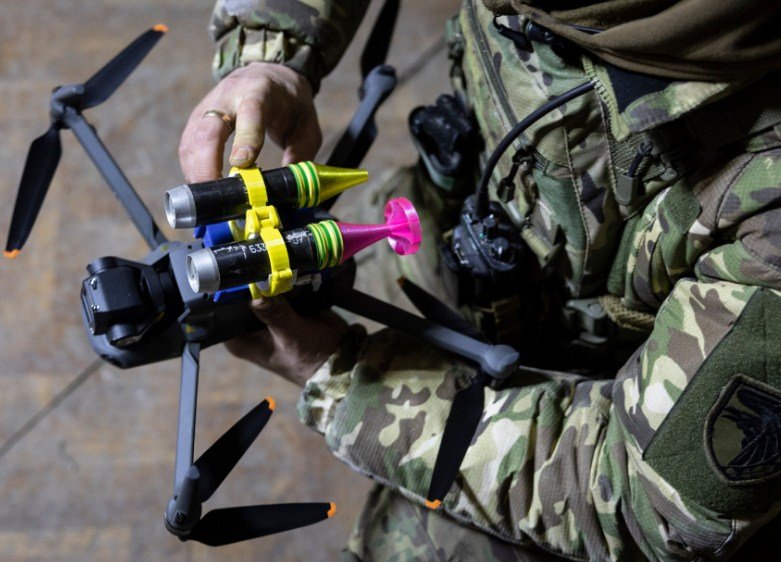The conflict between Russia and Ukraine has been raging for more than eight years, and it has seen the use of sophisticated weapons and tactics by both sides. But one of the most striking features of this war is the role of drones, especially the cheap and simple ones that can be bought online or made at home. These drones are not only used for surveillance and reconnaissance, but also for direct attacks, artillery spotting, logistics, and communication. Ukraine is a hotbed of innovation for drone technology, and it is using it to counter the Russian military superiority.
The rise of the budget drones
Drones have been used in warfare for decades, but they were mostly expensive, complex, and operated by advanced militaries. The U.S. has been the leader in drone warfare, using them for intelligence, surveillance, and reconnaissance (ISR) and targeted strikes in various conflicts around the world. But in recent years, the drone market has exploded, and many commercial and hobbyist drones have become available for anyone to buy. These drones are small, light, cheap, and easy to use. They can be controlled by a smartphone or a remote controller, and they can carry cameras, sensors, or even explosives.

The war in Ukraine has seen the widespread use of these budget drones by both sides, but especially by the Ukrainian forces, who have been facing a more powerful and better-equipped adversary. According to a report by the Center for Security and Emerging Technology, drones are involved in a broad spectrum of missions in Ukraine, such as:
- ISR: Drones are used to monitor enemy movements, positions, and activities, and to provide situational awareness for the troops on the ground.
- Strike: Drones are used to deliver explosives or grenades on enemy targets, either by crashing into them or by dropping them from above. These drones act as kamikazes or loitering munitions, and they can cause significant damage and casualties.
- Artillery spotting: Drones are used to provide accurate coordinates for artillery fire, and to adjust the fire based on the feedback from the drones. This increases the effectiveness and precision of the artillery, and reduces the risk of friendly fire or collateral damage.
- Logistics: Drones are used to transport supplies, ammunition, or spare parts to the front lines, or to evacuate the wounded or the dead. This reduces the need for conventional vehicles or helicopters, which are more vulnerable and costly.
- Communication: Drones are used to relay signals or messages between different units or locations, especially in areas where the communication infrastructure is damaged or jammed by the enemy.
The challenges and opportunities of drone warfare
The use of budget drones in Ukraine has been a game-changer for the war, but it also comes with many challenges and risks. One of the main challenges is the vulnerability of the drones to enemy countermeasures, such as electronic warfare, anti-aircraft fire, or cyberattacks. Russia has been using sophisticated systems to jam, spoof, or hack the drones, and to shoot them down with missiles, guns, or lasers. Ukraine has been trying to overcome these challenges by developing more resilient and autonomous drones, or by using swarm tactics to overwhelm the enemy defenses.
Another challenge is the legal and ethical implications of drone warfare, such as the accountability, proportionality, and discrimination of the drone strikes, and the protection of civilians and human rights. The use of drones also raises questions about the psychological and social effects of the war, such as the dehumanization, desensitization, or trauma of the drone operators and the victims. These issues are not unique to Ukraine, but they are amplified by the intensity and complexity of the conflict.
On the other hand, the use of budget drones in Ukraine also offers many opportunities and benefits, such as:
- Cost-effectiveness: Drones are much cheaper than conventional weapons or platforms, and they can be easily replaced or repaired. They also reduce the operational and maintenance costs of the military, and the human and material losses.
- Innovation: Drones are a source of creativity and experimentation for the Ukrainian forces, who have been modifying, improving, and inventing new drones and tactics. They have also been collaborating with local companies, universities, and volunteers, creating a vibrant ecosystem of drone development and production.
- Asymmetry: Drones are a way of leveling the playing field for the Ukrainian forces, who have been facing a stronger and more aggressive enemy. They allow them to strike back, to disrupt, and to deter the Russian forces, and to gain an edge in the war.
The future of drones in Ukraine and beyond
The war in Ukraine is not only a war of drones, but also a war for drones. Both sides are competing to gain the upper hand in the drone domain, and to influence the future of drone warfare. Ukraine is not only using drones to defend its sovereignty and territory, but also to showcase its technological and military capabilities, and to attract international support and recognition. Russia is not only using drones to advance its interests and ambitions, but also to test and demonstrate its power and dominance, and to challenge the global order and norms.
The war in Ukraine is also a war with implications for the rest of the world, as it is a testing ground and a learning opportunity for other countries and actors, who are watching and studying the drone developments and dynamics in the region. The war in Ukraine is a preview and a warning of what the future of warfare might look like, and what the challenges and opportunities might be. The war in Ukraine is a war that matters, and drones are at the center of it.
